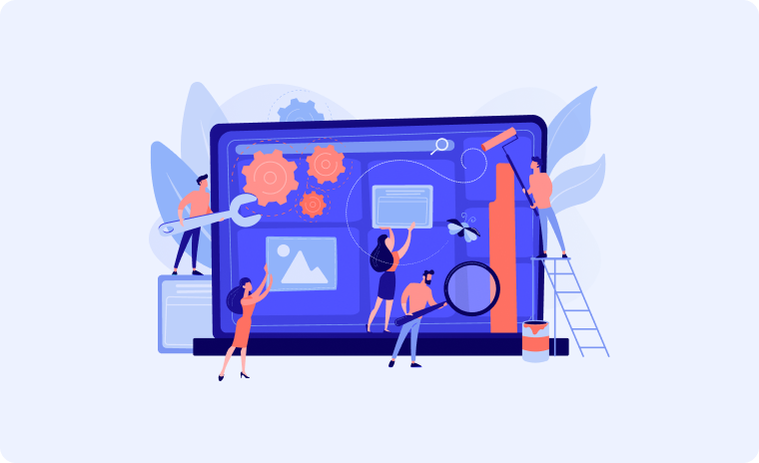No-code to Put an End to the Software Maintenance Drama
The software industry has peculiar dynamics. It differs from the traditional sectors of the economy with its culture, high turnover rate and dizzying speed of technological change. Another huge difference between the software industry and other traditional sectors of the economy involves the product development process. In the manufacturing sector, the product development process is over once the product hits the market: Following the launch of a new model of car or home appliance, the design and development teams can focus on another project, having only to revisit the earlier project to assess customer feedback and work on a facelift model. In the software industry, however, the launch of a product is only the start of a more dynamic process in the Software Development Life Cycle (SDLC).
Maintenance is the biggest part within the SDLC because, according to Meir M. Lehman, the scholar who canonized the laws of software evolution, maintenance is nothing but evolutionary development. In other words, it is not a particular stage that kicks in at some point in the product’s life cycle, but rather the whole development the product goes through after its launch. If the pre-launch development is the tip of the iceberg, maintenance is the huge mass of ice submerged in water.
Software maintenance is not only the biggest but also the most costly stage of the SDLC. Maintenance costs have been rising steadily over decades. Their share in the total cost of ownership (TCO) can be as high as 60 percent and there are studies showing that maintenance costs make up around 90 percent of total cost of software development cycle. In the case of an app, maintenance costs may account for 70 percent of TCO during the life of the app.
Not all maintenance is routine and pre-planned, either. Once a software product is introduced to the market, it gains a life of its own. The customer demand and feedback given cause significant shifts in the post-launch product roadmap. As a product owner, you might find out that people have hacked your product and started using it in ways that you never imagined were possible, creating a series of bugs you did not expect at all. The dynamic competitive environment might also require your company to prioritize things that were not in the plans before.
Maintenance can be a nightmare for anybody developing or owning a software product. Here, no-code technology offers significant advantages. The fact that no-code platforms make possible up to 10 times faster software development translates into much lower maintenance expenses because this allows for more efficient use of developers’ time. Developers tend to command pretty high salaries, therefore better employment of their talents unlocks efficiencies for a company. In conventional software development, even simple changes requested by customers has to be carried out by the development team. But no-code changes that, too. No-code platforms empower support people outside the developer community to take care of routine maintenance tasks, driving down costs considerably. Faster software development on no-code platforms also expedites time-to-market and time-to-value, giving a company advantage over its competition.
That’s one of the reasons we at Peaka think that it is not a good idea to export code out of a no-code platform and revert to conventional software development after the MVP stage—that is almost akin to quitting your weight loss program after losing a few pounds and going back to old habits. The MVP stage in the SDLC corresponds to something like the fifth lap in a 60-lap race in Formula 1—definitely not the right time to abort a strategy that has served you well. Maintenance makes up most of the post-MVP stage of a product and hides within it significant costs. Migrating your product from no-code to conventional coding after the MVP stage will deny you the true long-term benefits of no-code technology. Why be content with just having saved time and money while developing your MVP when you can keep reaping the benefits for years to come?




 Please
fill out this field
Please
fill out this field









